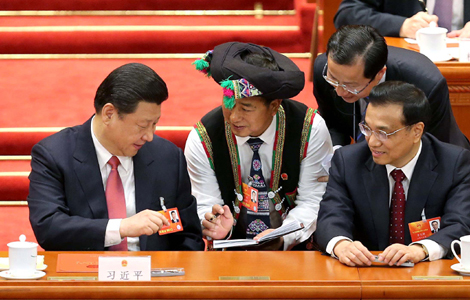China to control scale of megacities: Wen
Updated: 2013-03-05 17:52Zheng said the country should channel resources to focus on the development of mid-sized cities with populations between 500,000 and 1 million, as well as small cities with less than 500,000 people.
Fan Gang, an economist and former advisor to China's central bank, said urbanization is not equivalent to the development of cities.
|
 |
"I hope the government can understand this point very clearly," Fan said, "We have ignored this in the past."
Many migrant workers can't enjoy the same benefits as urban residents, Fan said, adding that the urbanization drive should solve this problem through improved public services and reforms in rural areas.
China's urbanization rate rose by 1.3 percentage points to 52.57 percent last year, 0.5 percentage points higher than expected, according to data from the National Bureau of Statistics. The government expects the rate to climb further to 53.37 percent in 2013.
Urbanization means more people will leave rural areas to work and live in cities. But rural issues remain the major concern of the Chinese government, as the rural land system is central to maintaining rural stability and ensuring China's long-term development.
Wen said he saw faster agricultural development, more significant changes in rural areas and more tangible benefits in recent years than in any other period.
"Rural areas are the source of all the major and difficult problems that we face in building a moderately prosperous society in all respects," Wen said. "We must make solving issues relating to agriculture, rural areas and farmers a top priority in all of our work."
The government expects total grain output to surpass 500 million tons this year. It also plans to provide safe drinking water for another 60 million rural people, make safe drinking water available to 87 percent of the rural population and build or upgrade 200,000 km of rural roads.


